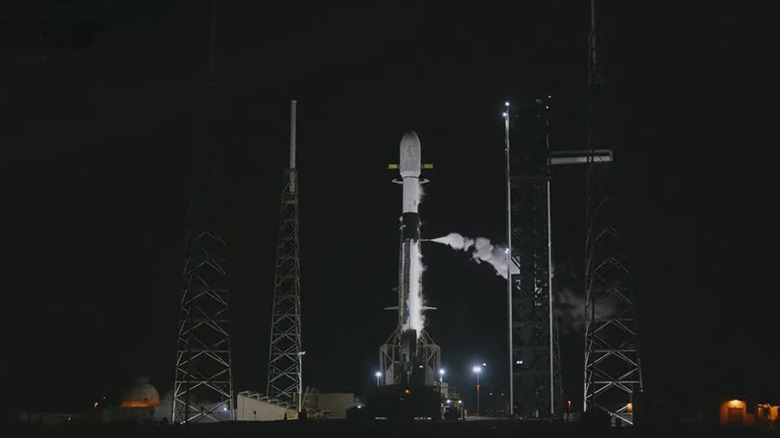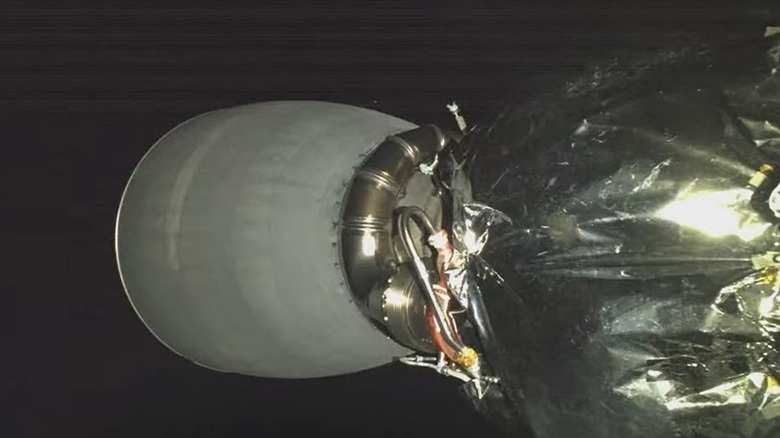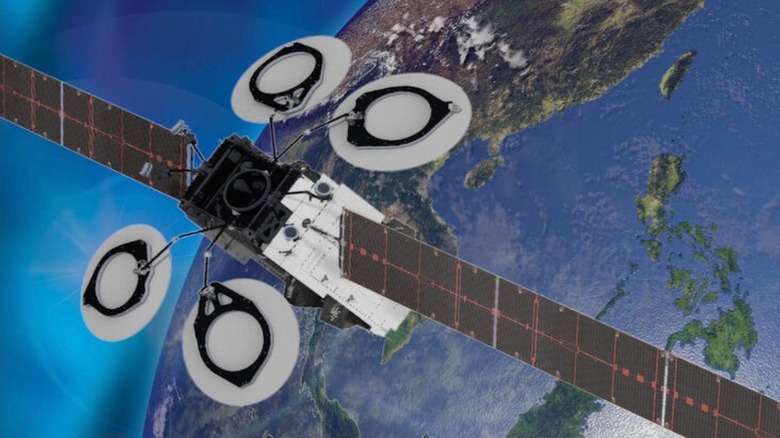Here's What To Know About The SpaceX Launch For Nusantara Lima Mission
Whilst SpaceX's Starship rocket has a history of spectacular failures, its Falcon 9 rocket is considered one of the planet's most reliable rockets. That was proven by another flawless launch on September 11, 2025, when a Falcon 9 rocket lifted off from Cape Canaveral, Florida. The launch carried the Nusantara Lima Satellite (SNL) into orbit for PT Pasifik Satelit Nusantara, an Indonesian private satellite company. The SNL is a telecommunications and internet satellite capable of data transfer speeds of 160 Gbps. It can also be used for environmental monitoring, disaster mitigation, and military purposes. When it enters service in early 2026, it will be Asia's largest capacity communications satellite.
Although the launch of the 7.8-ton satellite was originally intended for Monday, September 8, 2025, the launch was postponed three times due to unsuitable weather conditions. However, for SpaceX and the NLS, it was a case of fourth time lucky, and the rocket and its payload successfully left Earth's atmosphere shortly after taking off at 9:56 p.m. This was, of course, nothing new for Falcon 9's first stage booster. This particular booster is a space veteran, having made the trip into space on 23 previous occasions, landing successfully after each one. Let's join the Falcon 9 on its latest mission and see how the rocket carried the LSM into space — and then made the journey home.
The take off and into orbit
SpaceX's Falcon soared into the air shortly before 10:00 p.m. on September 11. Precisely one minute and 12 seconds later, it reached a stage known as Max Q. For all the engineers and ground-based personnel, this is one of the most nerve-wracking moments of the mission. Max Q is the point where the mechanical stress on the rocket is greatest. It occurs when the rocket is moving fast enough to generate high aerodynamic pressure but still be low enough for air pressure to push back. The Falcon 9 sailed past this danger point, likely to the relief of all involved.
The next critical flight stage occurred at around two-and-a-half minutes. Starting at two minutes and 28 seconds, the first-stage main engine cut off, the first and second stages separated, and the second-stage engine fired up — all within 10 seconds. From this point, the launch separates into two stages. At six minutes and 30 seconds into the launch, the first stage begins a series of engine burns and maneuvers that conclude with another successful Falcon 9 Landing — this time on the quirkily named A Shortfall of Gravitas droneship in the Atlantic Ocean.
In the meantime, the second stage also fired a series of engine burns as it continued on its mission to deploy the Indonesian satellite. At 27 minutes and 25 seconds into the flight, the mission was completed when the satellite was deployed, taking up a geosynchronous orbit 22,236 miles above the earth and adding to the growing number of satellites in space.
What is the Nusantara Lima satellite?
Launched by PT Pasifik Satelit Nusantara, Indonesia's first private satellite company, the NSL retains distinctly American roots. It was built by Boeing and is based on the company's 702MP platform. This platform is designed to supply medium-power satellites with a lifespan of 15 years or more. The 702MP platform first saw the light of day — as it were — in 2009, and is built at Boeing's plant in El Segundo, California. However, there are some aspects of the SNL that set it apart. Firstly, there is the highly efficient hybrid propulsion system, which uses chemical and electric propulsion components to deliver much-improved efficiency over more traditional systems.
Another feature of the satellite is its ability to focus its throughput capacity on where it's most needed. The satellite's advanced payload processing feature is tailored to suit the unique geographical challenges that the Indonesian Archipelago presents, with residents scattered across the nation's more than 17,000 islands. To help the satellite deliver reliable internet to regions that have typically struggled, there are eight ground stations being built across the region. Additionally, other Southeast Asian countries like Malaysia and the Philippines are expected to benefit from the satellite's services.
It will take the satellite a few months before it's stabilized in its set orbit, after which three weeks of equipment testing and checks will take place. If all goes well, these steps should be concluded and the satellite activated by early 2026.


